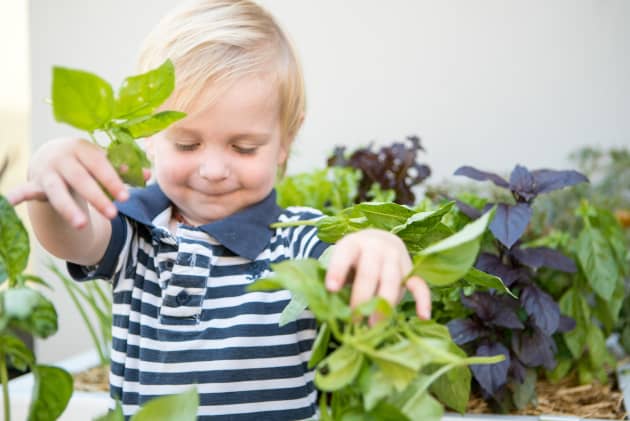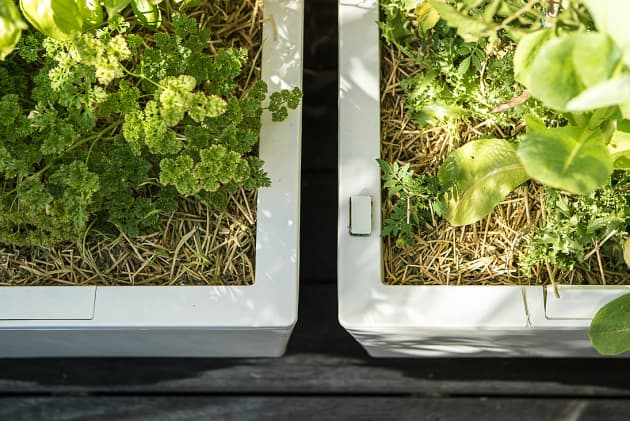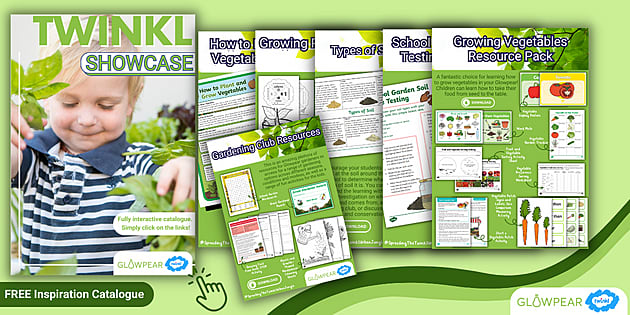Glowpear's Dr Lockrey gives us some seasonal gardening tips!
Well, it’s that time of year again when holidays beckon and everything is springing to life around the garden.
It’s also the perfect time to get kids into gardening too. So, what are the key things to remember when planting out your garden and how can you get the children involved?
We’ve prepared some of the essentials to get you and your little helpers going.

It all comes back to soil…
It might not be the most glamorous part of the growing process, but soil is definitely one of the most important. The condition of your soil affects everything from how fast your plants grow, to their susceptibility to disease and pests. It can also make plants you grow healthier for you to eat.
It’s pretty simple really: mineral-rich soil means mineral-rich plants, and a mineral-rich diet. Maybe not so interesting for the flower fanatics amongst us, but for those growing their own food at home, it’s super relevant.
These are also terrific concepts to be instilling in our younger generations as we teach them about where food comes from, and the related health benefits of fresh produce.
To help you get started, we have some terrific Glowpear soil mixes for container gardening here, whilst our friends at Twinkl have a fantastic array of soil typologies for you to consider for various plants too.
So now we know why we need healthy soil, you’ll need to keep it that way. After all, soil can be a lot more complex than you might expect, especially when you’re new to the veggie patch! You’ll need to keep an eye on your soil to make sure it stays in good shape.
Check out our list of various issues that may evolve below the surface, and what to do about each one. Also, check out Twinkl’s soil type testing exercises that the kids can sink their teeth into when determining if anything needs to be deployed to maintain or refresh your existing plots.

Space and sun
As the temperature rises, the natural cycles of plant life explode. So, it’s the best time to choose the plants you’re after and get your little garden helpers to assist in spacing out your plot.
The best advice for the spacing process is usually detailed on the packages or tags that come with seeds, seedlings or more established plants you’re planting.
Also, seeds may actually need a more sheltered germination environment than simply planting them outside in the ground, so make sure if these conditions are required or not.
Small seedlings may also need protection, so even little garden hacks like covering them with a half cut PET bottle can create a greenhouse environment until they get established.
Once established, most plants have a preferred position relative to the sun, whether it is full sun, partial shade, or full shade. This may also vary with the seasons. So take this into account when planning where to plot out each plant with the children.
For more on these dimensions of space and sun, check out our advice and Twinkl’s Growing Plants Resource Pack.

The elixir of life
Water is a key element to maintaining your garden, whether naturally from rain cycles or by hand watering periodically. It’s the elixir of life!
Getting watering wrong can be catastrophic, so work out if you’re either an ‘au naturel’, ‘sporadic sprinkler’, ‘drencher’, or ‘eco conscious’ waterer. Use our tips to work on strategies to water to your best self.
Container gardens like Glowpears can also lend a hand by ‘self watering’ due to capillary action built into the process. For more on this technique, check out the video we’ve put together on self watering functions and benefits.
Why not make this all fun by running a self watering challenge with the kids? Check out these videos to see how!

It’s always better to socialise
There are ways to make your garden more resilient, just by way of the combination of plants you choose to include together.
Companion planting consists of combining complementary plants in close proximity, and it’s something that all of us can try at home. They can do anything from deterring pests; improving growth; enhancing flavour; and creating shade and structure.
For instance, peas, beans and legumes are widely acknowledged for their nitrogen-fixing abilities (drawing nitrogen from the air, converting it and storing it in their roots), which in turn provides the nutrients for plants that follow in the same soil.
Alternatively, tarragon is an all-rounder and boosts the flavour of any neighbour, while basil also improves the flavour of surrounding herbs.
For more combination ideas, check out our video on companion planting here.

Finally, have fun, and get the kids excited about creating and enjoying the benefits of holiday gardening!
Glowpear also recommends these Twinkl resources to support your spring gardening:
- How To Plant and Grow Vegetables Fact Sheet
- Growing Plants Resource Pack
- Types of Soil Fact Sheet
- School Garden Soil Type Testing Lesson Ideas

